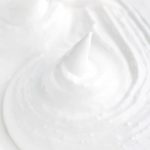Homemade Aquafaba
A step-by-step guide to making homemade aquafaba.
Servings: 1 (~ 3/4 cup)
Calories:
Ingredients
- 1 1/2 cups dried chickpeas
- 4 cups water
- dried kombu seaweed (optional)
Instructions
- Rinse. Add the chickpeas into a strainer and rinse under cold running water.
- Soak. Transfer the chickpeas into a pot and cover with water. Let the chickpeas soak for 8-12 hours. The chickpeas expand as they soak, so make sure to use a large enough pot.
- Cook. Leave the chickpeas in the pot with the soaking water. Do not discard the soaking water as it contains a lot of soluble plant solids. If the chickpeas aren’t completely submerged, add just enough water to cover them. Add a piece of kombu (if using) - kombu adds a lot of minerals that make the aquafaba stronger. Bring the chickpeas to a boil over high heat. Reduce the heat to low and simmer until the chickpeas are tender, 45-60 minutes. Long, slow cooking extracts the most active ingredients from the chickpeas, so you will get best results in a slow-cooker or on the stove top, not in a pressure cooker.
- Cool. I like to refrigerate the whole pot (with the chickpeas and the cooking liquid) so that the beans continue to marry with the liquid and release even more soluble plant solids, making the aquafaba stronger yet again.
- Strain. Once cool, strain the aquafaba into a large liquid measuring cup. You should have about ¾ cup to 1 cup/180-240 ml of liquid and the consistency should be similar to that of raw egg whites.
- Reduce/Thin** (if necessary). If the liquid is thin (and you have more than ¾ cup to 1 cup/180-240 ml), you will need to reduce it. Transfer the liquid to a small saucepan and bring it to a boil over high heat. Reduce the heat to low, and simmer until there is only ¾ cup to 1 cup/180-240 ml of liquid.Conversely, if the liquid is thick (and you have less than ¾ cup/180 ml), you’ve probably cooked it down too much. In that case, bring it to a boil over high heat. Reduce the heat to low, add some water to dilute it, and stop cooking when you have the right amount.
- Store. Leftover aquafaba keeps well in the refrigerator for 5-7 days, For longer term storage, freeze in an airtight container for up to 3 months, For ease, I like to freeze the aquafaba in 1-Tbsp./15-ml portions in ice cube trays. Once the aquafaba is frozen solid, transfer to an airtight container for future use. Frozen-then-thawed aquafaba whips just as well as fresh aquafaba.
Notes
*If you'd like to use canned aquafaba, 1 15-oz/425-g can of chickpeas yields ~ 1/2 cup/120 ml aquafaba.
**The more reduced the liquid, the more pronounced the chickpea flavor.
***Prep time includes soaking and cooking the chickpeas (~9 hours total).
**The more reduced the liquid, the more pronounced the chickpea flavor.
***Prep time includes soaking and cooking the chickpeas (~9 hours total).
